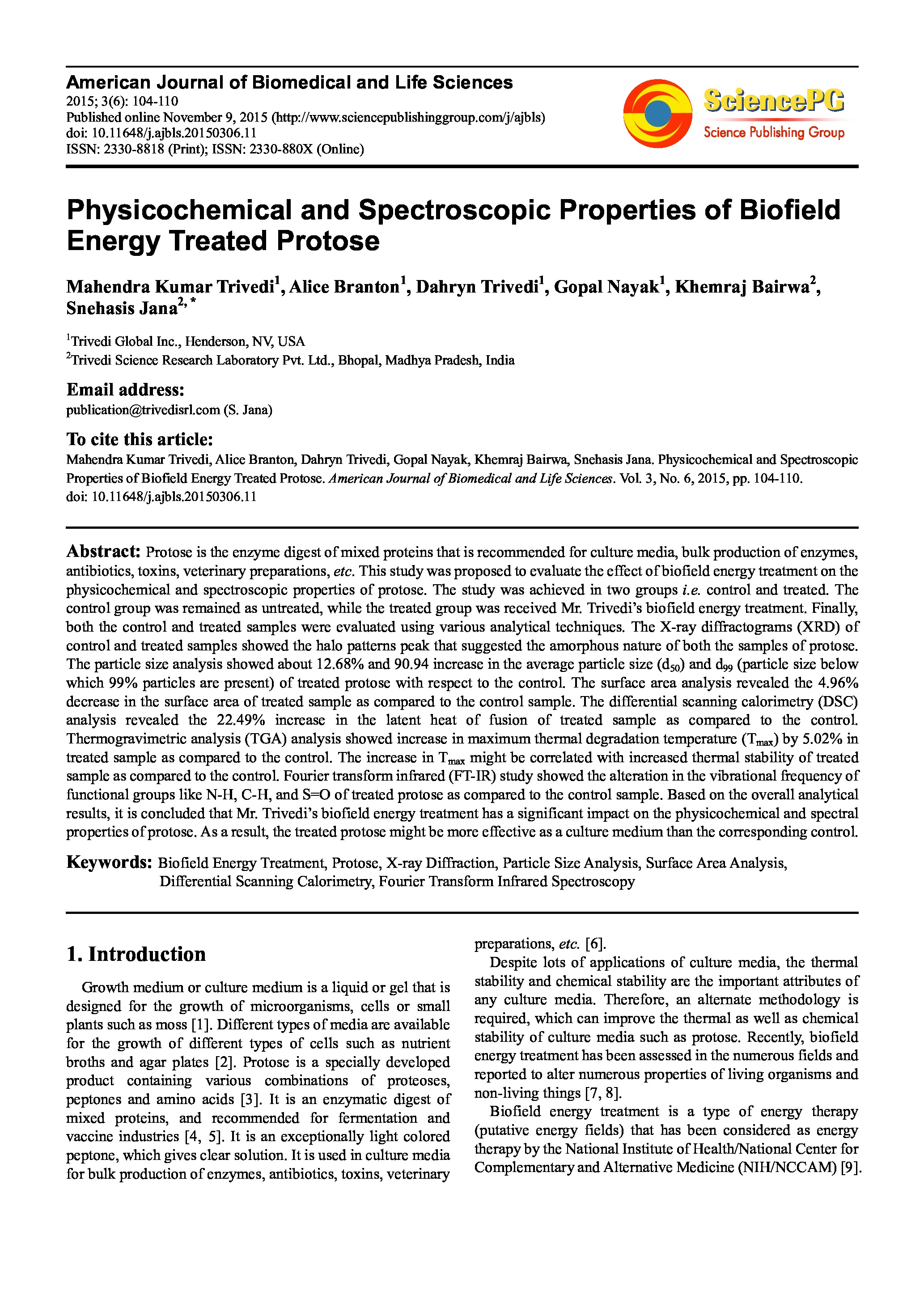Affiliation
Trivedi Global Inc., Trivedi Science Research Laboratory Pvt. Ltd.
Main category
Natural Sciences (Biology)
Abstract
Protose is the enzyme digest of mixed proteins that is recommended for culture media, bulk production of enzymes, antibiotics, toxins, veterinary preparations, etc. This study was proposed to evaluate the effect of biofield energy treatment on the physicochemical and spectroscopic properties of protose. The study was achieved in two groups i.e. control and treated. The control group was remained as untreated, while the treated group was received Mr. Trivedi’s biofield energy treatment. Finally, both the control and treated samples were evaluated using various analytical techniques. The X-ray diffractograms (XRD) of control and treated samples showed the halo patterns peak that suggested the amorphous nature of both the samples of protose. The particle size analysis showed about 12.68% and 90.94 increase in the average particle size (d50) and d99 (particle size below which 99% particles are present) of treated protose with respect to the control. The surface area analysis revealed the 4.96% decrease in the surface area of treated sample as compared to the control sample. The differential scanning calorimetry (DSC) analysis revealed the 22.49% increase in the latent heat of fusion of treated sample as compared to the control. Thermogravimetric analysis (TGA) analysis showed increase in maximum thermal degradation temperature (Tmax) by 5.02% in treated sample as compared to the control. The increase in Tmax might be correlated with increased thermal stability of treated sample as compared to the control. Fourier transform infrared (FT-IR) study showed the alteration in the vibrational frequency of functional groups like N-H, C-H, and S=O of treated protose as compared to the control sample. Based on the overall analytical results, it is concluded that Mr. Trivedi’s biofield energy treatment has a significant impact on the physicochemical and spectral properties of protose. As a result, the treated protose might be more effective as a culture medium than the corresponding control.
DOI
10.18147/smn.2016/paper:193
Do you have problems viewing the pdf-file? Download paper
here
If the paper contains inappropriate content, please
report the paper. You will be redirected to the landing page.
